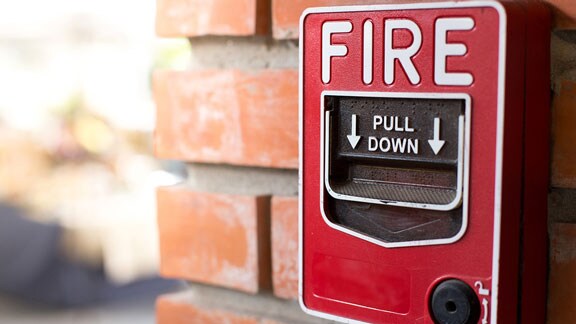Making the Right Refrigerant Choice
Sustainability From Beginning to End
When choosing a chiller, there’s more to reducing emissions than the choice of refrigerant. Here’s what you need to know about chillers and new, low-GWP (Global Warming Potential) refrigerant alternatives.
3 THINGS TO KNOW ABOUT SAFETY.
1. Some refrigerant alternatives are mildly flammable. All high-pressure refrigerant alternatives have some degree of flammability. To use these alternatives safely, there are significant implications on product configuration, installation cost and overall risk.
2. The use of mildly flammable refrigerant is new in commercial chiller applications. All safety standards and building codes need to be finalized so customers know to how safety install and use equipment. These standards will minimize risk.
3 THINGS TO KNOW ABOUT COST
1. Next generation refrigerants are more expensive. Today, chemically complex refrigerant alternatives like HFO blends are more expensive than HFCs, and it is expected that these alternative will remain more expensive than today’s HFC prices for years to come
2. These refrigerants can drastically impact equipment costs. Some refrigerant alternatives negatively impact capacity and efficiency when just dropped-in. To overcome these impacts, costly changes would be made, like increased compressor size, increased condenser size and/or increased refrigerant charge.
3. Additional expenses are associated with the use of mildly flammable refrigerants. Even when applied safely, these fluids require special handling, training and insurance, which adds cost.
3 THINGS TO KNOW ABOUT REGULATIONS.
1. Johnson Controls is heavily involved in refrigerant regulation discussions. Working closely with refrigerant producers, government regulators and other equipment manufacturers provides an opportunity for practical transitions with appropriate investments.
2. HCFC refrigerants have phase-out dates. The Montreal Protocol mandated HCFC phase-out is proceeding per plan to globally prohibit the use of R-22 and R-123 in new equipment, and will eventually prohibit its production.
3. The Kigali Amendment has identified phase-down goals for HFC refrigerants. In some regions, refrigerants like R-134a and R-410A will start to be used less frequently in new equipment. But complete elimination or a phase-out of HFC refrigerants has not been finalized.
![]()
3 THINGS TO KNOW ABOUT ENVIRONMENT.
1. Drop-in replacements can increase energy usage. Some refrigerant alternatives have a negative impact on energy efficiency. Systems that are not optimized perform less efficiently, increasing overall operating cost and fossil fuel usage.
2. The refrigerant properties address the smallest part of a chiller’s potential emissions. Total building efficiency – including chiller plant optimization – has the most significant impact on global warming potential.
3. Total Equivalent Warming Impact (TEWI) is a more complete measure of environmental progress. The TEWI standard considers both the direct impact (refrigerant) and the indirect contribution (energy consumption) to greenhouse gases. More than 95% of total chiller greenhouse gas emissions are attributable to the burning of fossil fuels versus the impact of refrigerant leakage. For example, a modest 1.6% improvement in chiller efficiency is enough to completely offset direct R-134a refrigerant emissions.
At YORK®, we make business decisions based on your business – the best refrigerant solution depends on the application. YORK® chillers have been, and continue to be, the best at operating efficiency in real-world conditions – reducing emissions, improving your environmental impact and protecting your financial bottom line – now, and in the future.



